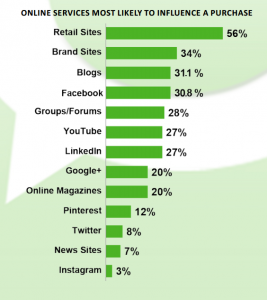With the shift in the search marketing (SEO) landscape over recent years away from heavy focuses on keyword optimisation, it is high time for all digital marketing functions to become key elements of an SEO strategy, and for other marketing (including offline) functions to also support growth in website traffic.
Is there less distinction nowadays between digital marketing functions?
The following timeline highlights just how inclusive other elements of digital marketing have now become as part of SEO strategies.
2012/2013
SEO historically almost stood in silo, primarily focused to build website traffic by link building for keywords using techniques such as spamming keywords to directories, guest posting or blog commenting. Google updates such as Penguin as well as the Hummingbird update during 2013 were a clear sign of Google’s intent to counter against black hat keyword spamming activity within the industry.
2014
Those within the digital industry realised (if they didn’t already) that a broader mind-set was needed. Those sceptical about the effects of Google updates on their activities maybe had their websites negatively affected or potentially started to question the value of their heavily keyword focused client reports. After all, keywords had been drummed into clients as a campaign KPI for many years afore; however were keyword reports really showing any value or return on investment (ROI)?
2015
The goalposts for reporting have shifted, with KPI’s for website performance focused more heavily on more measurable metrics such as:
- Increasing relevant website traffic
- Increasing levels of engagement with the website and reducing bounce rates
- Increasing conversions/form completions
- Measuring success of content over keywords
- For those already showing initiative and following best practice, the KPI’s above would already have been in place for a number of years. There are still a number of organisations however that need to adapt their focus and understanding of the factors that drive website performance
Achieving incremental growth in organic search traffic and SEO success requires a combined effort. Not only are industries highly competitive, but it is no longer as easy to manipulate a search index position on Google. Greater effort is therefore required from every angle to enhance website performance, so the notion that website performance is measured solely on the actions of the SEO function reporting ranking changes is a fallacy.
Whilst it is true that each individual within a marketing function may well be a specialist in a particular area i.e. SEO, or social, there is far less of a distinction nowadays between roles in digital marketing due to the crossover of functions, especially with the change in landscape seen in search. As a result, there is an argument for organisations to match the shift in the digital industry, cross skilling their workforce to become more rounded digital marketing professionals.
Critical considerations for SEO success
Content marketing – Generation of high quality content, whether this be through website optimisation or generating blog and news content (OnPage), or through the generation or syndication of content away from the website (OffPage). These are all crucial factors to engaging others, generating interest, and enhancing the probability of people linking back to content
Social Media – Investing time and effort across relevant social media channels to build audiences
CRO- Website changes shouldn’t be based on subjective approaches but based on true user journeys and supported by statistics and insight. Reports then need to reflect these findings
Offline marketing – any activity conducted offline, for example speaking at an industry event can really amplify brands, with offline activity leading to online activity. A prediction made by Lisa Thomas (CEO of Saatchi Group) for this 2015 is along these lines, but not to think of Digital as separate to marketing.
Reporting a greater level of analysis needs to be conducted by the SEO function and fed back to others within the marketing team or to clients. If not more comprehensive then reports need to dig deeper, providing more substance than just website visits and bounce rates at top level which can be attained by most marketers. This will also include results of content and social activity, with recommendations for actions moving forward.
Embracing Digital Marketing for the year ahead
Marketing teams should always be aligned with the same objectives in mind, to increase website traffic. Regardless of daily tasks and responsibilities of each function (i.e. SEO or content marketing), there should be a willingness to pull together, adopting a collaborative approach to marketing efforts.
With all elements considered, the year ahead should signify a broader, more intelligent and more inclusive approach to digital marketing efforts. It should be obligatory to communicate regularly and effectively within marketing teams, to clients and vice versa.
There is little scope for those in SEO or offline marketing activity to work in isolation to other digital marketing functions and vice versa. All things considered as a result, a more rounded approach should not only compliment website SEO performance but brand awareness and website reputability throughout 2015 and beyond.
(271)







